Climate
The Karakoram is a distinctive weather and climate divide: Pakistani, open the lower Indus west is fairly abundant precipitation and green (or in the high regions heavily glaciated), the north and east, however are subject to almost wüstenhaftem air, resulting in significantly smaller glaciers result. Thus, the glaciers in the Hunza Valley border largely in height from 2000 to 2500 m in the east (Rimogletscher) partly at 4500-4800 m. The way to Karakorumpass far east is completely free of ice. Overall, the area is relatively dry because of the south-west (beyond the Indus and Shyok) upstream western Himalayan ranges.
Tourism
From the actual mountain region alone is the Hunza Valley opened to tourism in the west, specifically mentioned by the Karakoram Highway paved road that leads over the Kunjirap pass in the Chinese Xinjiang. Here you can find hotels, guesthouses, campsites and opportunities for medical care. Otherwise you have to at points on the edge of the high mountains (Skardu), or keep outside (Leh), or waive development. The road over the pass is Kunjirap (to the Chinese border), a popular route for sporting cyclists.
(Wikipedia)
Gilgit-Baltistan,
to 29 August 2009 Nordgebiete called (Northern Areas), is a special territory in the far north of the country Pakistan. It is not a province of Pakistan, but a part of the disputed between the People's Republic of China, India and Pakistan Kashmir region.
to 29 August 2009 Nordgebiete called (Northern Areas), is a special territory in the far north of the country Pakistan. It is not a province of Pakistan, but a part of the disputed between the People's Republic of China, India and Pakistan Kashmir region.
Location
Gilgit-Baltistan borders the Pakistan belongs to semi-autonomous region of Azad Kashmir, the Khyber Pakhtunkhwa province, in Afghanistan, the People's Republic of China and the Indian state of Jammu and Kashmir (clockwise from the south). The border with India is the Line of Control (LOC), which was established in 1949 by the UN (UNCIP / UNMOGIP). She was in all Kashmir wars, most recently the Kargil War (Third Kashmir War), a lossy high mountain war with combat zones up to 5,000 meters, fought again, in ceasefire in 1999 but moved it back to the state from 1972 back. Since there is voltage with single flaring incidents.
Gilgit-Baltistan borders the Pakistan belongs to semi-autonomous region of Azad Kashmir, the Khyber Pakhtunkhwa province, in Afghanistan, the People's Republic of China and the Indian state of Jammu and Kashmir (clockwise from the south). The border with India is the Line of Control (LOC), which was established in 1949 by the UN (UNCIP / UNMOGIP). She was in all Kashmir wars, most recently the Kargil War (Third Kashmir War), a lossy high mountain war with combat zones up to 5,000 meters, fought again, in ceasefire in 1999 but moved it back to the state from 1972 back. Since there is voltage with single flaring incidents.
Districts
of
Diamer, Astore, Gilgit, Ghizer, Hunza / Nagar, Baltistan, Ghanche, Skardu
Diamer, Astore, Gilgit, Ghizer, Hunza / Nagar, Baltistan, Ghanche, Skardu
Landscape
The areas are divided into the northwestern region and the southeastern region of Gilgit Baltistan. The region is mainly the Karakoram , with K2 (Godwin Austen, 8611 m), Gasherbrum group (Gasherbrum I / Hidden Peak: 8080 m, Broad Peak: 8051 m Gasherbrum II: 8034 m), Distaghil Sar (7885 m), Masherbrum (7821 m), Rakaposhi (7788 m), the northwest to the Hindu Kush , the highest peaks are Tirich Mir (7690 m), Istor-o-Nal (7403 m). The southern part is drained by the upper reaches of the Indus River, and the mountains south of it already count the Himalayas, with the Nanga Parbat (8125 m) as the main peak. Overall, in the region in the current boundaries with 5 of the 14 eight-thousands of the world.
Throughout the areas have the typical vegetation of the high mountains to the valleys are cut deep. The Indus leaves the region at an altitude of 1,000 meters, while Jalipur, only 20 km from Nanga Parbat from 8000, it has 1400 m, on entering the region in the vicinity of the Indian Kargil 2400m. More important are the valleys of Gilgit, a tributary of the Indus from the Hindu Kush, and that comes from the Hunza river side, from the north from the Khunjerab Pass (4733 m) on the border with China.
The areas are divided into the northwestern region and the southeastern region of Gilgit Baltistan. The region is mainly the Karakoram , with K2 (Godwin Austen, 8611 m), Gasherbrum group (Gasherbrum I / Hidden Peak: 8080 m, Broad Peak: 8051 m Gasherbrum II: 8034 m), Distaghil Sar (7885 m), Masherbrum (7821 m), Rakaposhi (7788 m), the northwest to the Hindu Kush , the highest peaks are Tirich Mir (7690 m), Istor-o-Nal (7403 m). The southern part is drained by the upper reaches of the Indus River, and the mountains south of it already count the Himalayas, with the Nanga Parbat (8125 m) as the main peak. Overall, in the region in the current boundaries with 5 of the 14 eight-thousands of the world.
Throughout the areas have the typical vegetation of the high mountains to the valleys are cut deep. The Indus leaves the region at an altitude of 1,000 meters, while Jalipur, only 20 km from Nanga Parbat from 8000, it has 1400 m, on entering the region in the vicinity of the Indian Kargil 2400m. More important are the valleys of Gilgit, a tributary of the Indus from the Hindu Kush, and that comes from the Hunza river side, from the north from the Khunjerab Pass (4733 m) on the border with China.
Population
and traffic
The settlement is very thin. The only significant town is at Gilgit Gilgit River. Languages mainly spoken are Urdu, Shina and Balti. The majority of the inhabitants are Muslim.
Runs through the northern areas of the Karakoram Highway - Coming from Kashi - the Khunjerab Pass on the Hunza Valley, the lower Gilgit and the Indus, and then continues on to Havelian between Islamabad and Peshawar.
Gilgit
Gilgit is a city on the River, a
tributary of the Indus, in the Pakistani part of the Karakoram. They once belonged to Kashmir and is
the only city with a larger influence in northern Pakistan. The population is 10,414 (as of 1
January 2007).
, the city lies on the Karakoram Highway, the only passable not only by off-road vehicles road and important trade route between Pakistan and China, which also Gilgit gaining in importance.
Gilgit has a small airport, the only can be flown by day and good weather. It is also the switching station for telephone lines located in the northeast Hunza Valley.
Gilgit is the capital of the region of Gilgit-Baltistan, to 2009 when the area was named North (Northern Areas).
, the city lies on the Karakoram Highway, the only passable not only by off-road vehicles road and important trade route between Pakistan and China, which also Gilgit gaining in importance.
Gilgit has a small airport, the only can be flown by day and good weather. It is also the switching station for telephone lines located in the northeast Hunza Valley.
Gilgit is the capital of the region of Gilgit-Baltistan, to 2009 when the area was named North (Northern Areas).
Gilgit
Gilgit is a region in the extreme northwest
of the Kashmir region. That
between 1500 and 1800 meters, the valley of Gilgit covers an area of 9273 km ². It is located on the south side of the
Karakoram and the Gilgit river, which comes from the Kafiristan Lahorigebirge
and about 50 kilometers below the city Gilgit flows into the Indus, crossed. The inhabitants are predominantly Shia
Muslims.
Due to a relatively mild climate are rice, and cotton, and to a
large extent fruits, especially pomegranates, mulberries, figs, melons and
grapes, grown. Dried apricots,
raisins and silk are important export items Dar.
Gilgit has been connected since 1979 to the nearly all-weather Karakoram Highway (KKH).
Gilgit has been connected since 1979 to the nearly all-weather Karakoram Highway (KKH).
Gilgit was until the mid 19th Century ruled by their own princes. 1860 conquered the Maharaja of Kashmir with its 4,000 man army counted almost without a fight. After the independence of British India and the subsequent conflict between the two newly created states of India and Pakistan Gilgit fell into the latter.
Gilgit is the capital of the region surrounded by moderately high mountains mainly the right of the river valley of the same name about 1530 meters above sea level. It is the capital city of Gilgit-Baltistan, the former Pakistani northern areas .
(Wikipedia)
The Pakistan Northern Areas , known as a paradise for the
adventure-lovers, offering a variety of opportunities for mountain expeditions
and for related activities such as trekking and mountain climbing. Here meet together three great
mountain ranges, the Karakoram, the Himalayas and the Hindu Kush. This region has the densest
concentration of high peaks in the world. There
are more than 100 peaks over 7000 m and 6000 countless peaks and five great
mountains of over 8000 meters, including the K2, the world's second highest
mountain. In addition to the high
peaks of these mountain ranges also contain the longest glaciers outside the
polar region. There are many
lakes, including the famous and unique Snow Lake. All this makes this area one of the
world's best trekking regions.

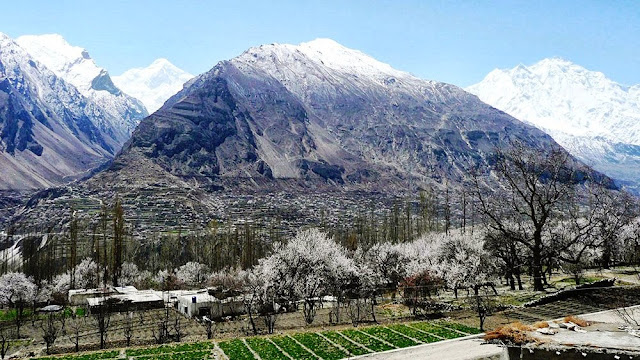
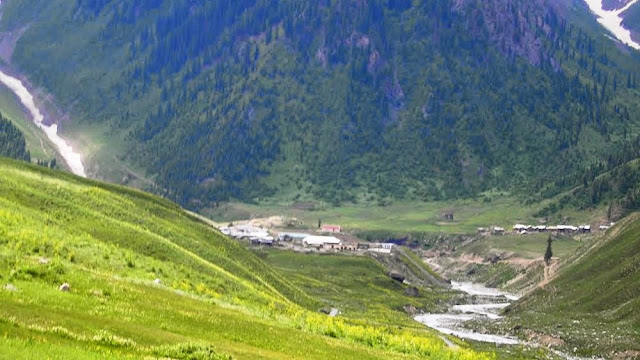
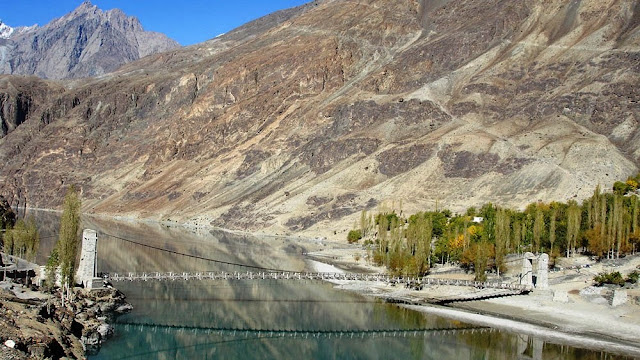
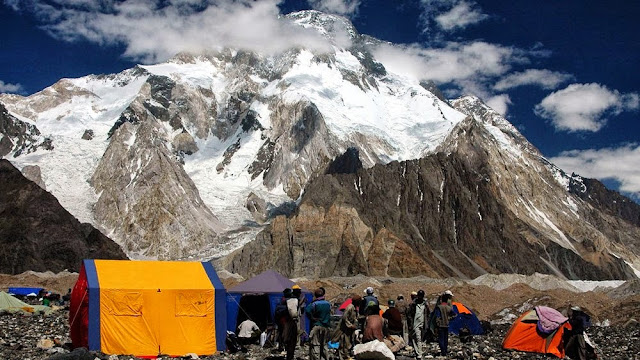
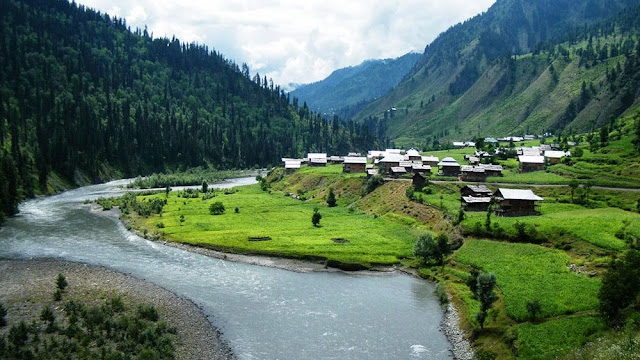
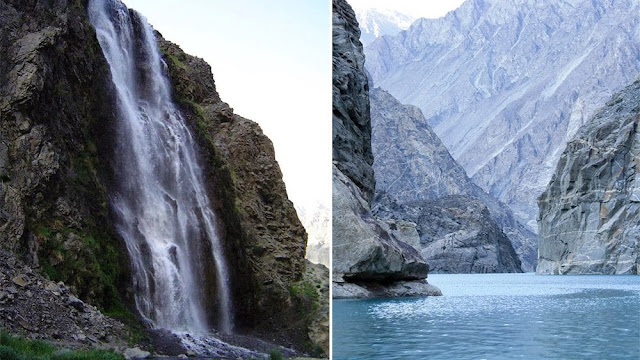










.jpg)



0 comments:
Post a Comment